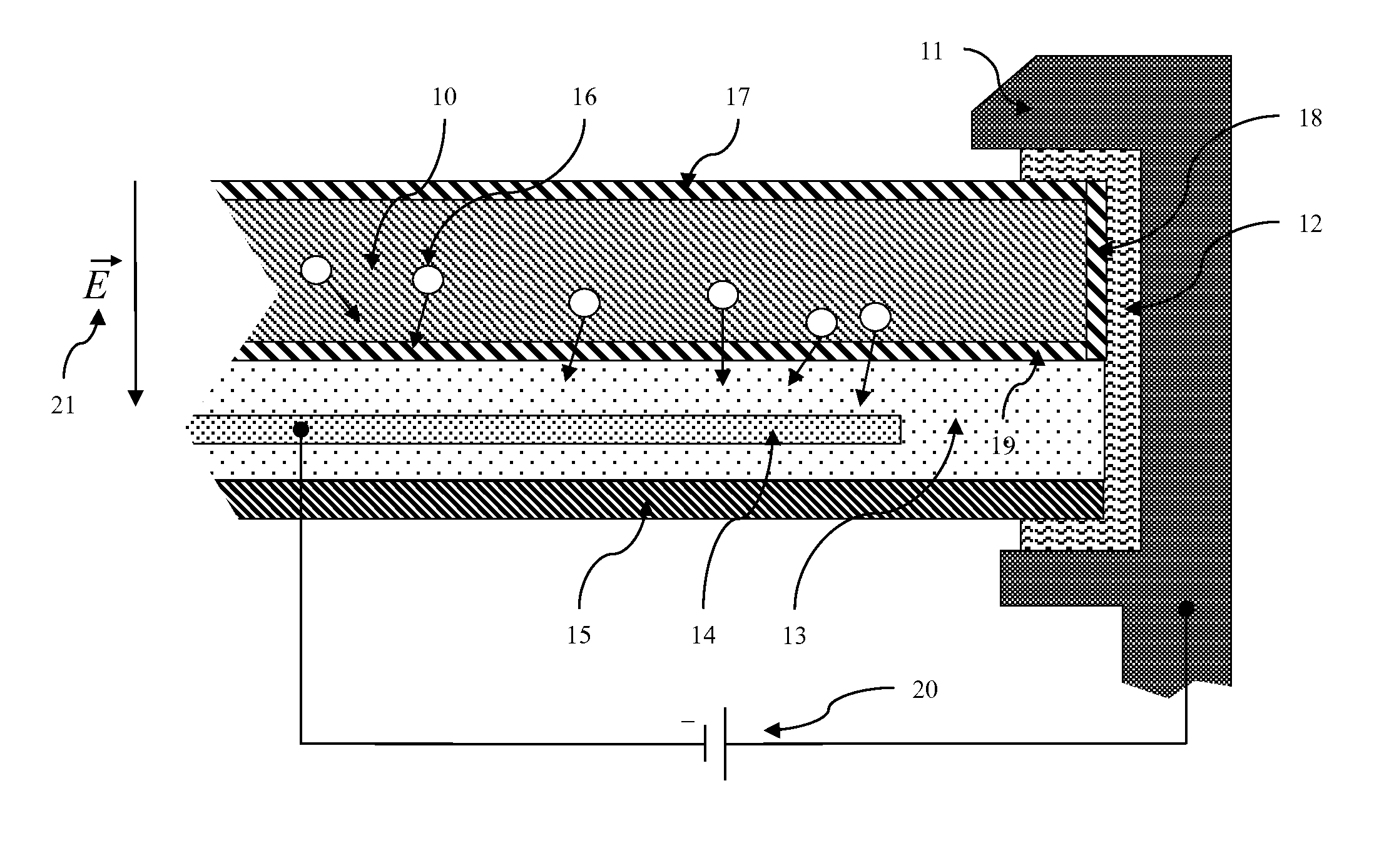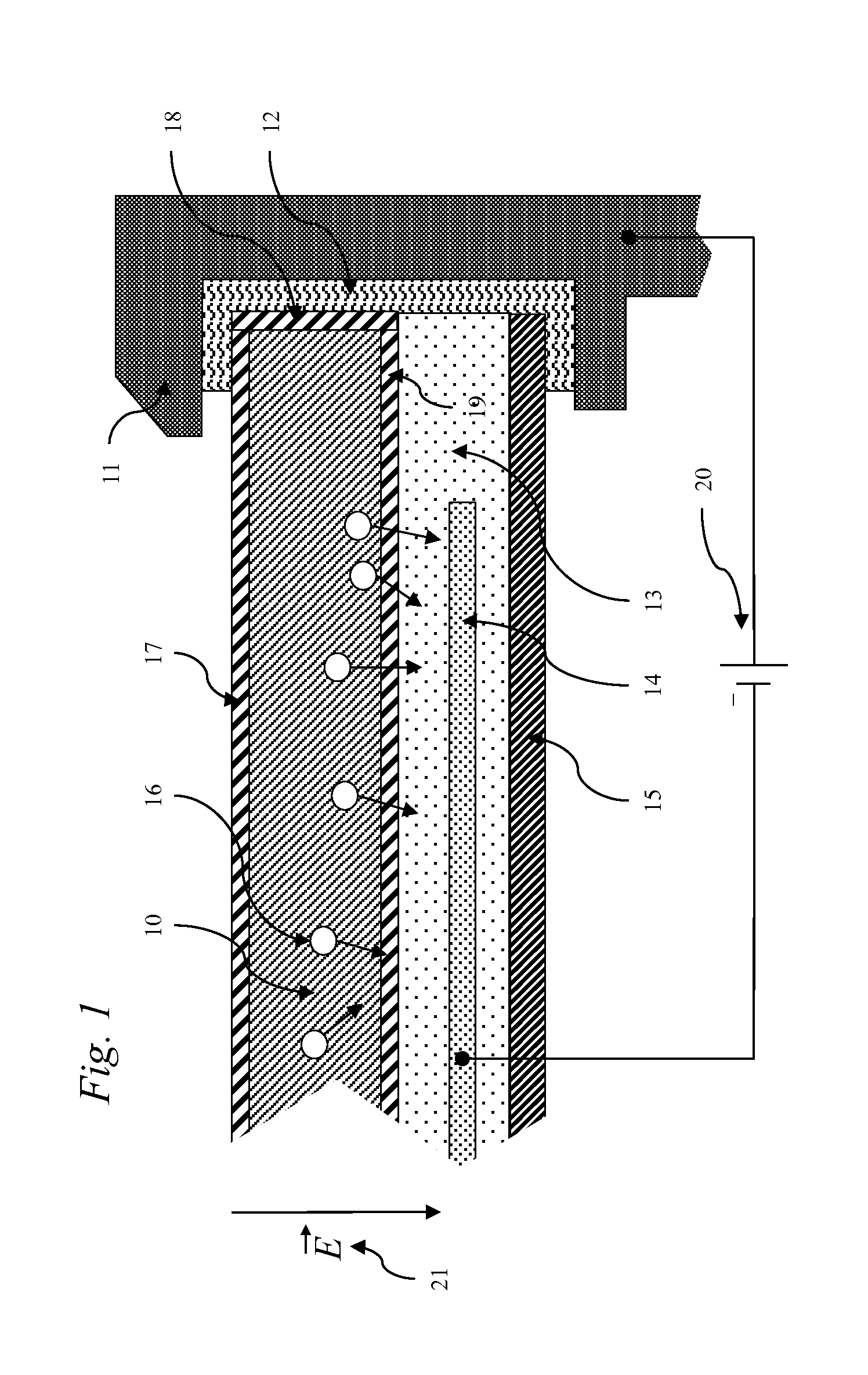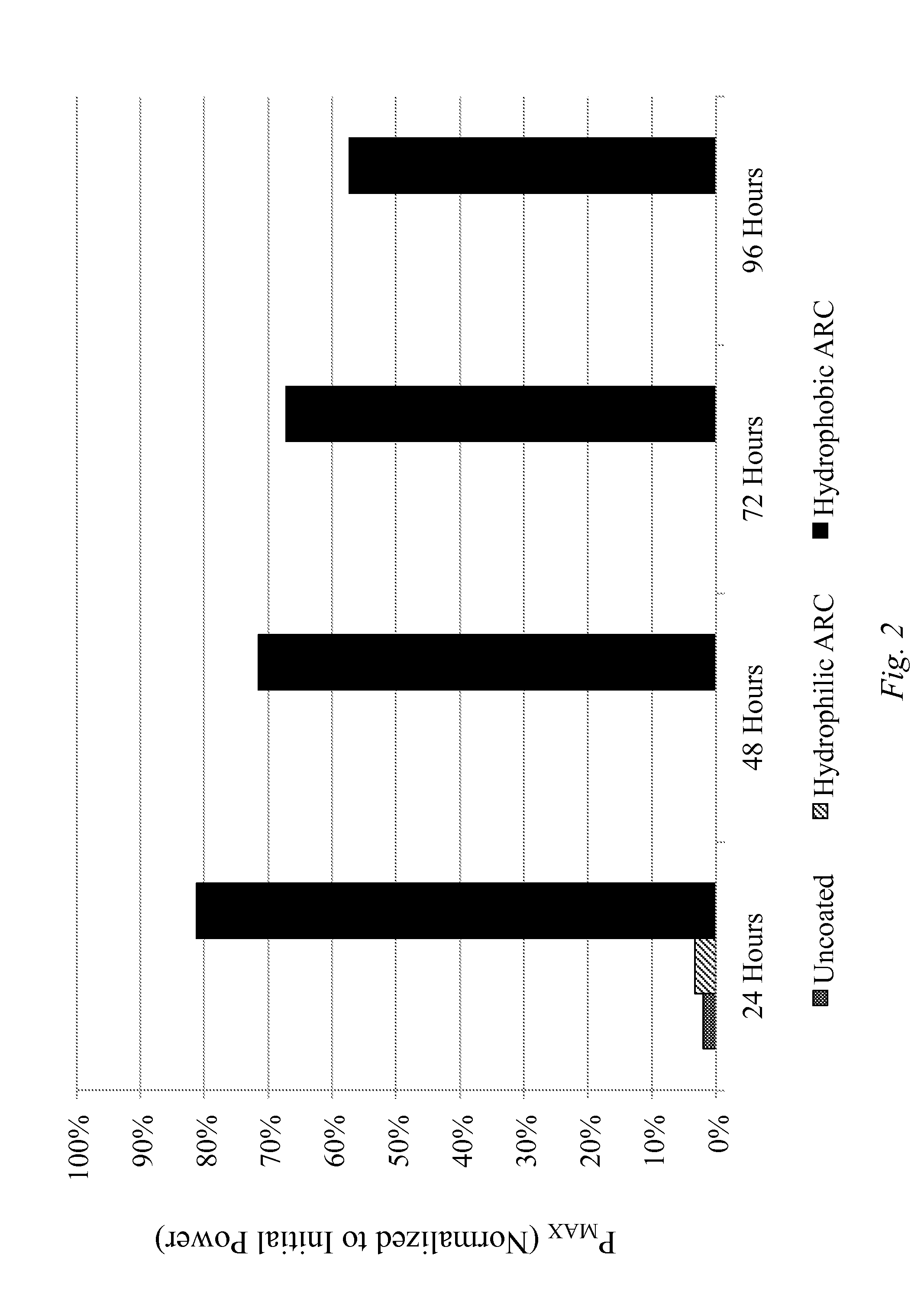Coating materials and methods for enhanced reliability
a technology of encapsulating materials and reliability, applied in the direction of anti-reflective coatings, sustainable manufacturing/processing, final product manufacturing, etc., can solve the problems of module power output capacity deformation, low resistance of encapsulating materials such as ethylene-vinyl acetate (eva) with low resistance to moisture intrusion or low electrical resistance,
- Summary
- Abstract
- Description
- Claims
- Application Information
AI Technical Summary
Benefits of technology
Problems solved by technology
Method used
Image
Examples
Embodiment Construction
[0032]FIG. 1 shows a cross-sectional view through a typical PV solar module. The front side of the module also known as the “sunny” side is at the top of the figure and the back side is at the bottom of the figure. The module is constructed as a stack of layers starting with the cover glass 10, encapsulating material 13, PV solar cell 14 and back-sheet 15. The edges of the module may be contained within a metal frame 11 adhered with a layer of silicone sealant, butyl rubber or composite tape 12. Encapsulating material or encapsulant 13 may include one or more layers of encapsulant as needed and as described herein as one layer, or two layers, or more.
[0033]During operation, that is when the PV solar module is illuminated by the sun, a high voltage 20 of up to 1500V DC may be maintained between the PV solar cell 14 and the frame 11. This creates a strong and constant electrical field 21 through the PV solar module. This constant electrical field provides a motive force for ions 16 wi...
PUM
| Property | Measurement | Unit |
|---|---|---|
| thickness | aaaaa | aaaaa |
| refractive index | aaaaa | aaaaa |
| refractive index | aaaaa | aaaaa |
Abstract
Description
Claims
Application Information
 Login to View More
Login to View More - R&D
- Intellectual Property
- Life Sciences
- Materials
- Tech Scout
- Unparalleled Data Quality
- Higher Quality Content
- 60% Fewer Hallucinations
Browse by: Latest US Patents, China's latest patents, Technical Efficacy Thesaurus, Application Domain, Technology Topic, Popular Technical Reports.
© 2025 PatSnap. All rights reserved.Legal|Privacy policy|Modern Slavery Act Transparency Statement|Sitemap|About US| Contact US: help@patsnap.com



